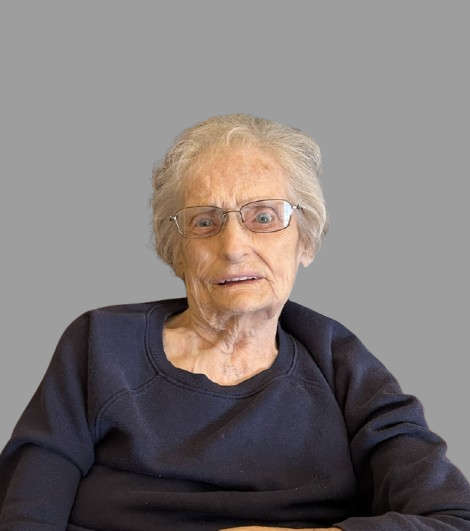
I would like to thank everyone who reached out to me by e-mail with ideas and questions after my first column appeared. I greatly appreciate your interest in Japan, and over the next few months I will do my best to address your questions and/or ideas for topics in future columns.
One reader of the Shelby County Post wrote that when she stayed with a Japanese family on a visit to Japan, she was fascinated with her host family’s altar where the family made daily offerings to a loved one who had passed. In addition, she was intrigued by how many Japanese people seemingly glide between the two main religions of Shintoism and Buddhism rather effortlessly. So, thank you Sylvia for your observations which are the topics of this week’s column.
Sylvia is correct in her observation that Japanese people largely do consider themselves to be both Shintoists and Buddhists. An example is how most Japanese have a Shinto wedding, but a Buddhist funeral. Every year on New Year’s Eve, hordes of Japanese people crowd into their local Shinto shrines (photo) to pray for good health and prosperity in the new year, but during the summer’s O-Bon season, these same Japanese people will attend to their ancestral graves and follow Buddhist traditions.
People who consider themselves to be Shintoists is just over 70% of the population and Buddhists are just over 67%, which indicates people claim both religions. Japanese Christians are only 1.5% of the population.
I think it is fair to say that the two religions of Shintoism and Buddhism, in many respects, coexist harmoniously and even serve to complement each other for the most part. If you ask a Japanese what religion he or she follows, you will likely be told “both.” But few Japanese people consider themselves to be “religious” in the same manner and context that Western Christians do. Culturally, both religions play prominent roles in Japanese daily life with certain traditions of each being followed for different events (like festivals) or traditions (like wedding and funeral-related customs).
When I lived in Hirosaki, Aomori-ken, I had a good friend who was a Buddhist priest and one time he was giddy with delight because he had been asked to officiate a wedding by one of his temple members. He lamented that as a Buddhist priest he was so accustomed to conducting funerals that when he was asked to do a wedding he was thrilled because, for a change, it was truly a happy celebration centered on new beginnings and love.
I once learned in graduate school that Buddhism is based primarily on a concept that emphasizes the idea of transcendence of one’s soul within the cosmos, which also includes human suffering, while Shintoism focuses more upon the concept of adaptation to life’s practical and realistic needs and desires through a polytheistic approach with the worship of many deities called “kami.”
The origins of Buddhism are well-known and documented, but Shintoism’s origins are much more ambiguous and is indigenous by nature. Buddhism originated in India in the 5th or 6th century BCE, spread to China, then eventually came to the shores of Japan. Shintoism, in contrast, is an ancient, animistic religion in that every living thing and even inanimate objects, like stones, possess spirits. Nature is revered and considered sacred, as well. Buddhism isn’t considered to be a theistic religion and humans who reach Nirvana —enlightenment — are venerated.
Another difference is how Buddhism subscribes to a clear doctrine and rules. Probably most people are most familiar with Zen Buddhism, but there are a number of other Buddhist sects within the religion and they all follow certain dogma and truths that are universal to Buddhism. Similar to Christianity in that many denominations encompass the religion, with small differences separating them, but the core beliefs tend to be the same.
Shintoism, on the other hand, as I mentioned earlier is more ambiguous in that there are no prescribed religious texts or set doctrine for the most part and as a polytheistic religion, it allows more flexibility and freedom of its adherents to worship “kami” or deities of their choosing. I remember when I first lived in Japan in the late 70s as a 17-year-old high school student, and going to a train station toilet and seeing a portable Shinto shrine displayed near the ceiling in the restroom. It seemed out of place to me at the time, but after I learned more about the religion, I understood that it was there to honor the train station toilet’s spirit.
So, if you travel to Japan and visit a “shrine” (jinja) it is Shinto, but if you go to a temple (tera) it is Buddhist. But sometimes both are featured within the same area, because the two religions really do coexist in harmony with one another. Most Shinto shrines have a large torii gate at the entrance, often painted a bright orangish-red color if made of wood, or if made of stone, it is left in its natural state. Shinto shrines also normally feature some sort of stone animal guarding it, like a dog, fox or other animal.
Buddhist temples tend to be more imposing structures, rather muted in appearance on the outside, but on the inside, they are elaborately decorated with ornate gold statues and wall hangings featuring images and depictions of the Buddha. Also, there is usually a large urn of burning incense outside to allow worshippers to purify themselves before entering. A Shinto shrine usually has a large water basin where worshipers may rinse their hands and mouth before entering the area. Since COVID-19, many shrines have removed the ladles for rinsing and drinking and only have free flowing water displays for rinsing the hands now. This is part of the new normal post-Covid.
Sylvia also commented on her host family making offerings to the souls of loved ones in their home altar. I suspect that this was a Buddhist “butsudan” which is a home altar built in a cabinet that is displayed in homes (photo). Family members will regularly make offerings of incense and favorite foods or drinks of those who have passed and who are being revered. This is most common in Japan, but some families also have a “tamaya”, which is a Shinto memorial altar and it is also dedicated to the spirits of departed family members or ancestors. These are less common from my experience because funerary-related traditions tend to be more dominated by Buddhist traditions in Japan.
Since I studied world religions in my graduate studies quite extensively, and even taught this subject to my graduate students, I have collected various religions’ objects to revere, honor and display in my home. Of course, I have a collection of crucifixes and menorahs having been raised in the Judeo-Christian tradition, but I also have a Thai Spirit house, a kamidana (god-shelf) with a portable Shinto Shrine, a small Buddhist butsudan, and a collection of other religious objects from other religious traditions. I like revering and honoring other religious traditions by incorporating these items into my home to allow the energy of these religions to permeate and bless my living space.
Todd Jay Leonard was born and raised in Shelbyville, but has called Japan home for over 34 years. He is currently a full-professor at the University of Teacher Education Fukuoka in Kyushu where he lives, writes, and teaches. He is the author of 26 books and can be reached at toddjayleonard@yahoo.com
Get the most recent Shelby County Post headlines delivered to your email. Go to shelbycountypost.com and click on the free daily email signup link at the top of the page.





